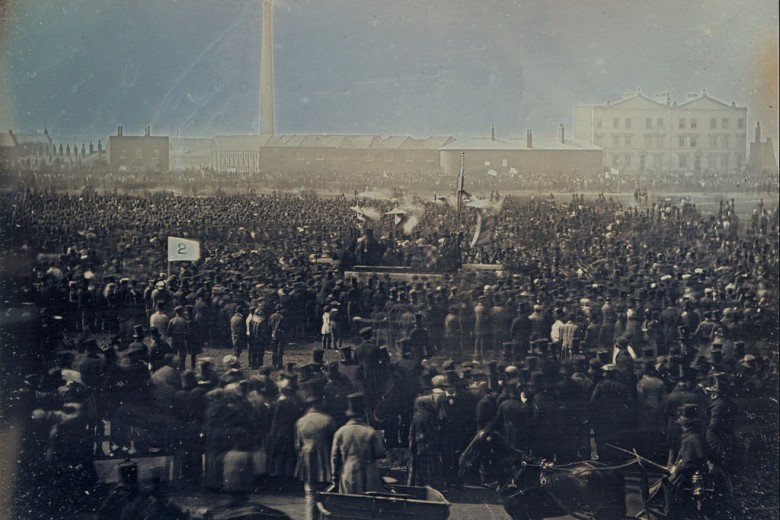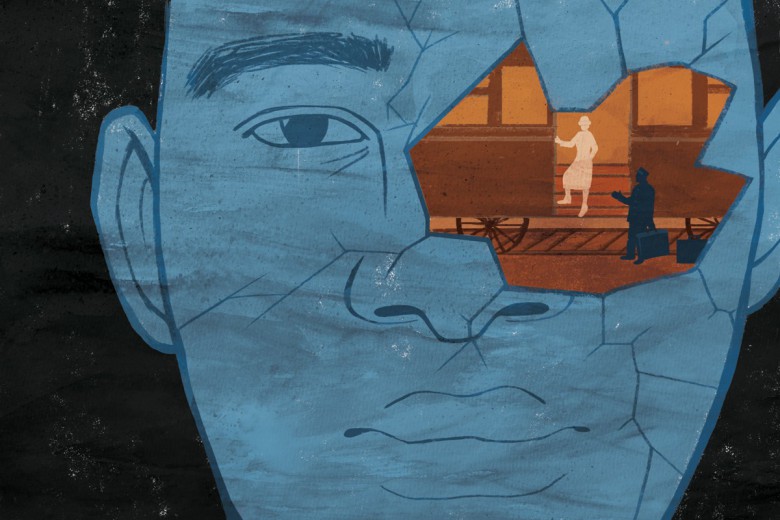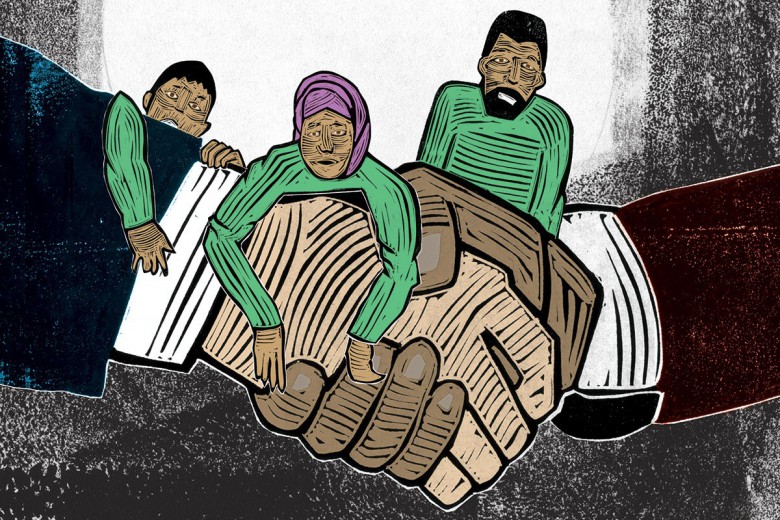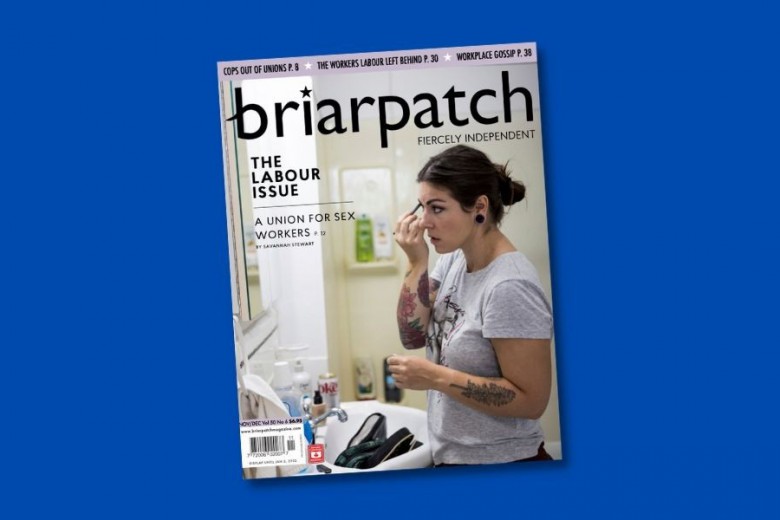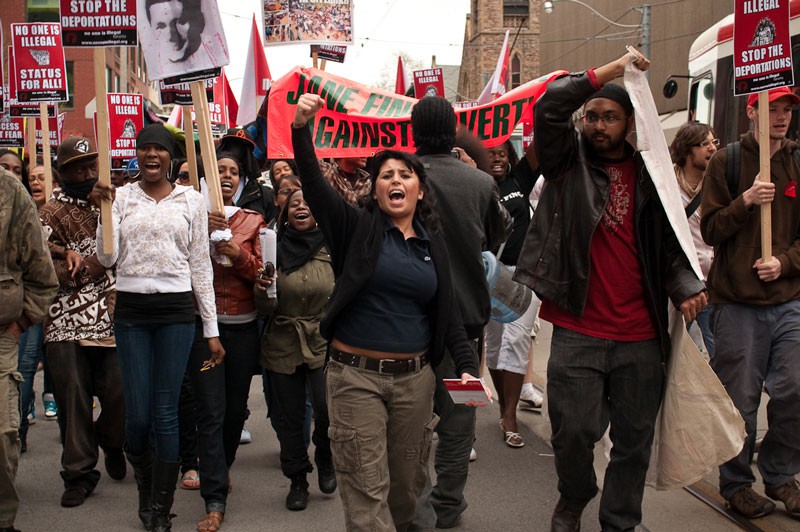
Every year about 300,000 people enter the Canadian labour market as temporary migrant workers, more than the 230,000 who enter as permanent residents on their way to acquiring full rights as citizens.
By being categorized as migrant workers by Citizenship and Immigration Canada, these hundreds of thousands of people are denied basic rights that citizens often take for granted.
As of April 2012, it is legal to pay migrant workers classified as “low-skilled” a wage five per cent less than the average, and migrant workers classified as “high-skilled” a wage 15 per cent lower than the average.
These wage cuts were introduced along with broad changes to federal Employment Insurance (EI). As migrant workers see their wages cut, unemployed citizens on EI will be forced to work in any field at 30 per cent below their previous wages, or risk losing benefits to which they have directly contributed to through payroll deductions. Employers are now encouraged to hire unemployed workers at much lower wages where they would otherwise have exploited workers classified as migrants.
Shifting economic conditions require a shuffling of those at the bottom of the labour hierarchy, and almost always put the interests of the most exploited into conflict with one another. Simultaneous changes to the EI program and migrant worker wage rates by Human Resources and Skills Development Canada are indicative of this trend, pitting unemployed citizens against migrant workers. To successfully fight such changes, labour and social activists need to resist government-defined categories and work toward an expansive notion of solidarity that demands justice for all.
Migrant worker: Fact or fiction?
As Peruvian sociologist Anibal Quijano has explained, settler-colonial states have always had labour hierarchies, and each rung of this labour ladder is racially organized. States like Canada create different categories of workers that allow for differentiated exploitation. Groups such as “migrant workers” are bureaucratic, governmental constructions.
“We cannot simply say that settler colonialism or genocide have been targeted at particular races, since a race cannot be taken as given. It is made in the targeting,” writes Australian historian Patrick Wolfe. The same can be said for migrant workers. Current immigration policy does not simply allow for the exploitation of migrant workers; rather it constructs migrant workers as exploitable.
As these categories are constructed and reconstructed, it is possible for those within them to move around. In the 1950s, workers arriving from the Caribbean replaced Italian workers as the new underclass, allowing Italian workers to move up the labour hierarchy into the realm of citizen, with all the attendant advantages.
Marginalized workers, classified as immigrant, temporary, or unemployed, are forced to compete with each other for bad jobs, low wages, and inaccessible services. Recent changes to EI legislation exacerbate that same competition.
A September 2012 article by the Asian Canadian Labour Alliance illustrates that a growing proportion of those who rely on EI are people of colour. Further, 19.8 per cent of all of racialized families live in poverty; racialized men are 24 per cent more likely to be unemployed than non-racialized men; racialized women earn 55.6 per cent of the income earned by non-racialized men. It is these unemployed, racialized workers who are now pitted against migrant workers.
For the most part, progressive movements have failed to bridge the divides created by government-constructed categorization. In July 2012, heads of provincial labour federations issued a letter to Canadian premiers outlining the Conservative assault against workers. They urged provincial political leaders to “denounce the exploitative expansion of the Temporary Foreign Workers Program…[and] collectively demand that Ottawa invest more in training to bridge the skills gap, so that unemployed Canadians can fill available jobs.” They also called for “improvements to Canada’s EI program as fewer than 40 per cent of unemployed Canadians are currently eligible for benefits.”
While these demands seem reasonable on the surface, Chris Ramsaroop of the Ontario-based organization Justicia for Migrant Workers suggests that the labour federations’ approach reinforces state-created divisions between immigrants and citizens. “In this letter, the federation presidents are not emphasizing increasing rights for migrant workers, but rather reiterating the age-old mantra of ‘jobs for Canadians’ without advocating how they can expand benefits and entitlements for both migrant workers and Canadian workers. By advocating their current position, they are reinforcing divisions within the working class.”
Ramsaroop suggests that an alternative strategy is necessary. “It is imperative that they advocate for expanding access to EI for all workers (migrant and Canadian), support demands for status upon arrival for all migrants, and support activists on the front line who are demanding a rethinking of globalization, where migrants should have access and rights irrespective of where they work and live.”
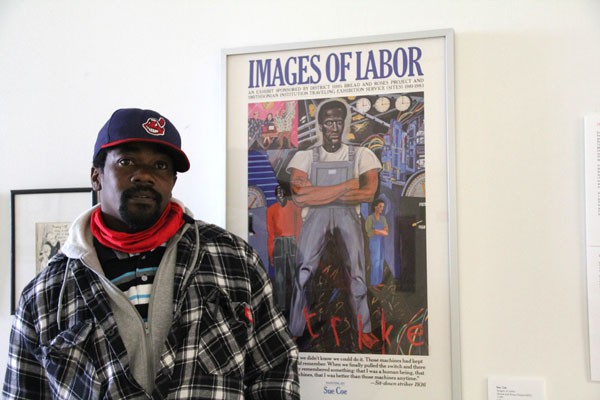
The “bogus” refugee
Even the most progressive activists and advocates implicitly, or explicitly, accept hierarchical labour categories, both in their organizing and demands. These divisions are not limited to those between citizens and non-citizens.
Consider the category of “refugee.” Immigration Minister Jason Kenney insists that “Canada’s generous asylum system has been abused by too many people making bogus refugee claims.” The response by many refugee rights organizations echo Tom Denton’s recent editorial in the Winnipeg Free Press, entitled “They aren’t all ‘bogus’ refugees, as portrayed by Kenney.” Such a perspective suggests that while some refugee claims might be “bogus,” others are deserving of Canadian compassion.
What is ignored in these debates is that people leave their homes for a myriad of economic, political, social, and personal reasons, many of which are directly tied to the prosperity of countries like Canada. There are few people fleeing solely for reasons of safety who do not also seek greater access to social services and employment opportunities. Yet the first set of reasons makes one a political refugee, worthy of protection, while the other makes one an economic refugee, out to “fool the system.”
While 60 per cent of refugee claimants in Canada will work for an average of three years in low-wage jobs before being deported, without access to EI or other social benefits, these refugees are never called “migrant workers.”
Separating people into categories of “migrant worker” or “refugee” fails to capture people’s lived reality.
“Immigrants are workers, students, parents, grandparents, visitors, spouses.. they are members of our families, workplaces, unions, our communities – each of these identities are chopped up into different immigrant streams by government,” says Macdonald Scott of migrant justice organization No One Is Illegal – Toronto.
Still mired in difference
Refugee and migrant rights communities, comprised of academics, NGOs, service providers, and activists, rarely question the imposition of governmental categories. Instead, they focus mainly on winning basic privileges for the categories of people for whom they have chosen to advocate.
Unions rarely refer to refugees as workers, while refugee rights organizations rarely speak out against attacks on migrant workers. Some encouraging exceptions to this trend are the migrant worker position paper by the Canadian Council for Refugees, and the statement on the Balanced Refugee Reform Act by the Canadian Labour Congress.
State and governmental authorities also fund advocacy and reform organizations according to strict categories. These funding cycles, targeted toward different “kinds” of immigrants, ensure that cross-category work remains more symbolic than substantial.
When labour and social movements accept governmental categorizations, they become quietly complicit in the exclusions of people. When advocates speak only of “deserving” refugees, for example, they allow the government to respond by building even more rigid refugee determination processes.
Recently, two refugee bills (C-11 and C-31) have instituted a two-tiered refugee determination system, whereby asylum seekers are assessed differently based on their country of origin. These changes give immigration enforcement the ability to indefinitely jail migrants based on suspicion. This new system was built on the back of a “bogus” refugee narrative, shared by both the government and many progressives.
Likewise, organizing only for the rights of migrant workers to have immigration status upon arrival in Canada creates opportunities for the federal government to implement EI policies that exploit and exclude poor people and people of colour who are citizens.
Toward a solidarity politic
Belief in the notion that most of the oppressed form a single class whose interests are tied together, and must be fought for together, is one means to break away from governmental divisions. However, while building a single, unifying framework, the very real differences in people’s experiences of governmental categorization must not be forgotten.
Demands by advocates should call for full access to rights, services, and benefits for all people, here and elsewhere. The demand for “status for all” articulated by No One Is Illegal groups is one example, as is the demand for “national regularization programs granting permanent immigration status for all non-residents living in Canada” by the Migrant Workers Alliance for Change (MWAC).
An expansive notion of solidarity is required not just as an ethical principle or a theoretical reflection, but enacted as an everyday struggle, both individual and collective. By rejecting governmental categorization, migrant workers, refugees, and citizens can see themselves not as categories but as people, as workers (waged and unwaged), and as comrades.
As Quijano reminds us, colonial societies such as ours have always divided (and defined) themselves along racial lines, now also expressed as citizenship lines drawn between and within the Global North and South. If labour is imagined outside of wage work and governmental categories, it gives us the tools to further a more collective struggle against the living legacies of dispossession, colonization, and exploitation.


